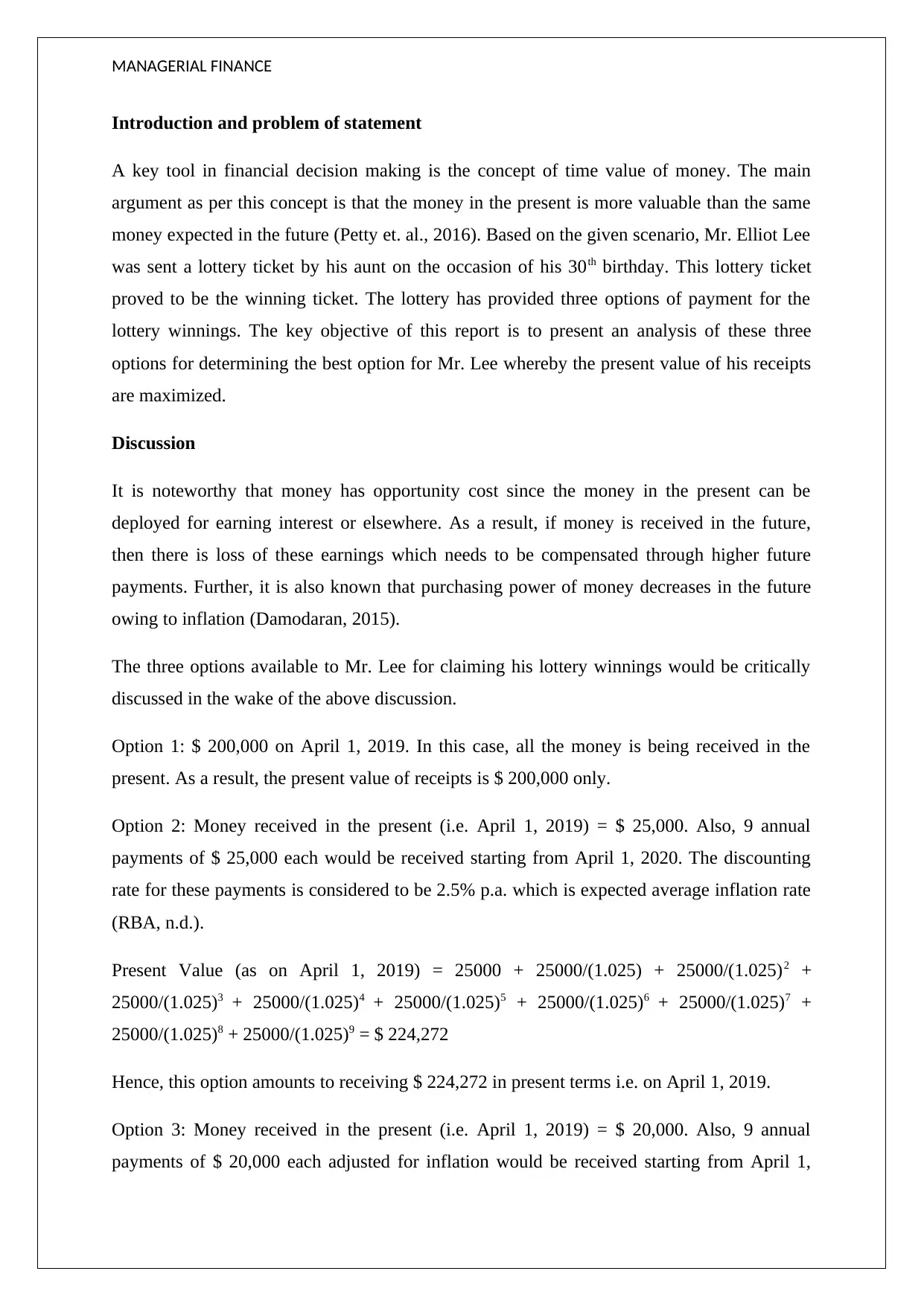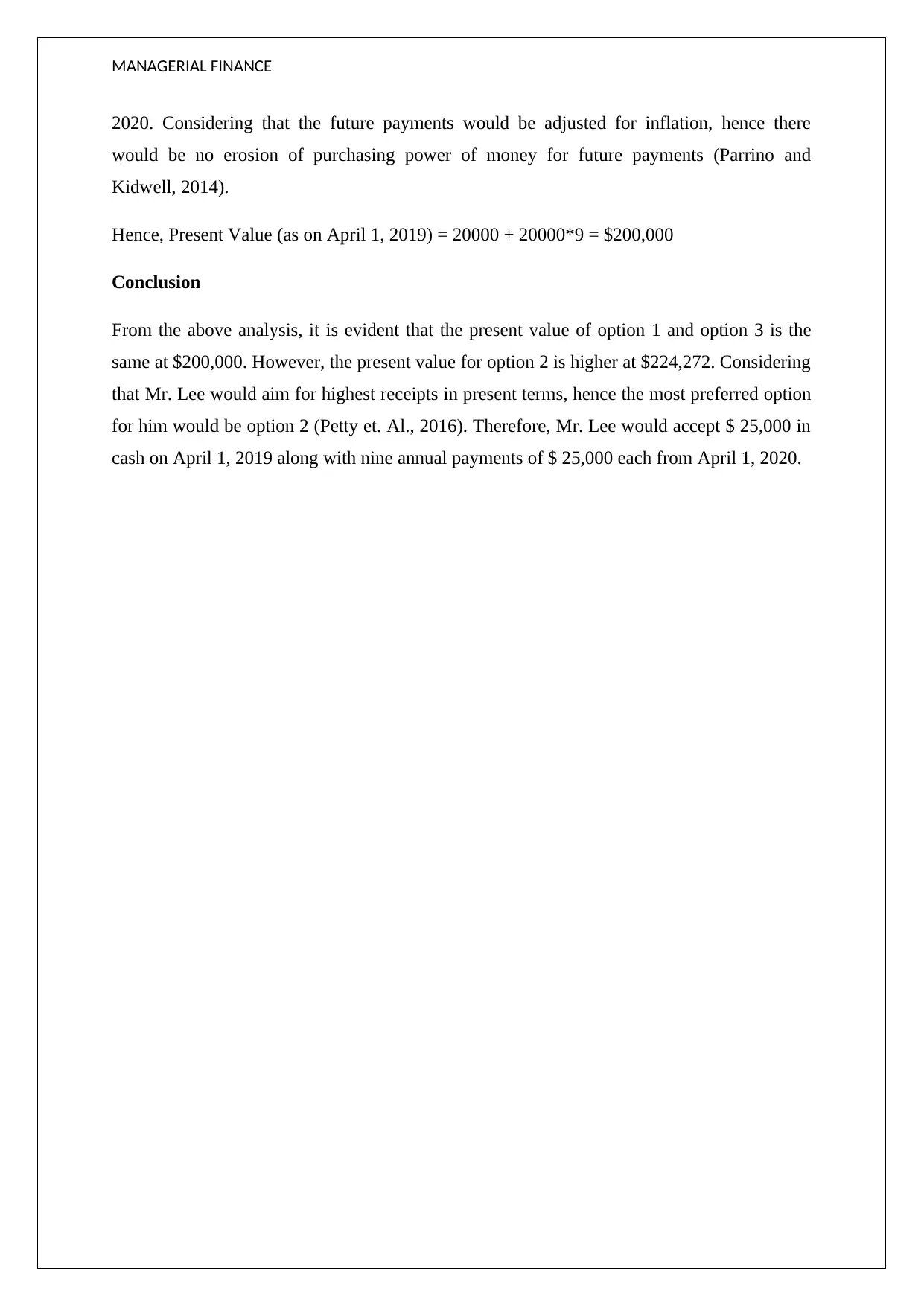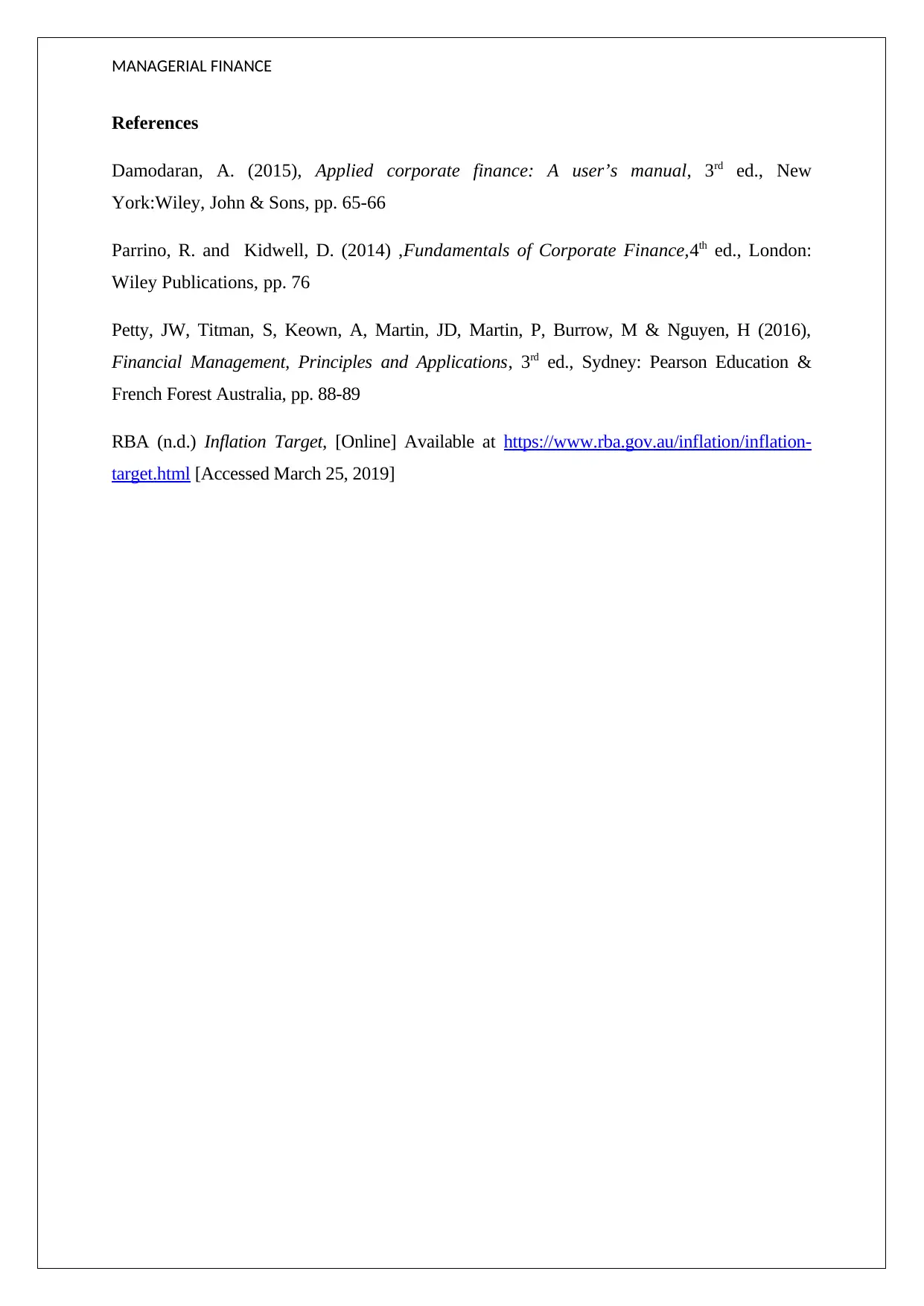BUSM4160: Time Value of Money and Lottery Winnings Optimization
VerifiedAdded on 2023/04/17
|4
|600
|123
Report
AI Summary
This report analyzes three lottery payout options for Mr. Elliot Lee, using the time value of money concept to determine the most financially advantageous choice. Option 1 offers a lump sum of $200,000, while Option 2 provides $25,000 upfront plus nine annual payments of $25,000, discounted at a 2.5% inflation rate, resulting in a present value of $224,272. Option 3 consists of $20,000 upfront and nine inflation-adjusted annual payments of $20,000, totaling a present value of $200,000. The analysis concludes that Option 2 is the most beneficial, as it yields the highest present value. Therefore, the report recommends that Mr. Lee select Option 2 to maximize his lottery winnings in present terms.
1 out of 4





![[object Object]](/_next/static/media/star-bottom.7253800d.svg)